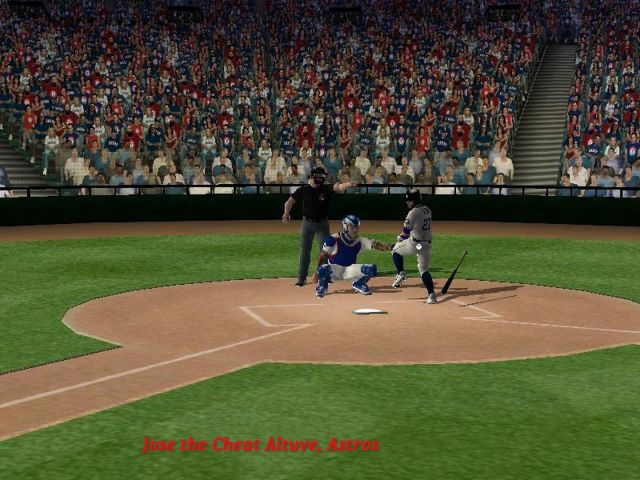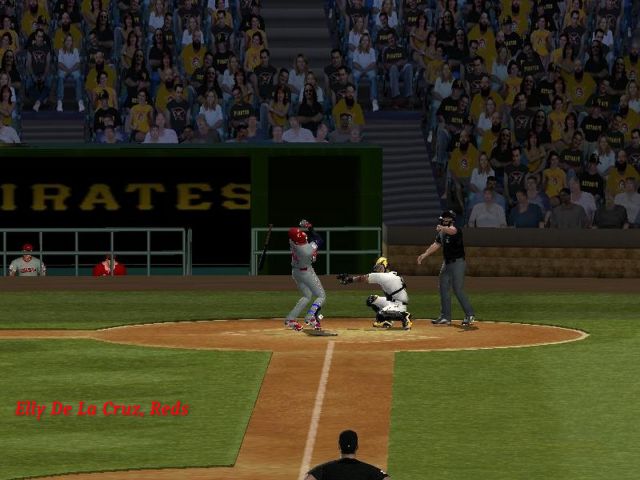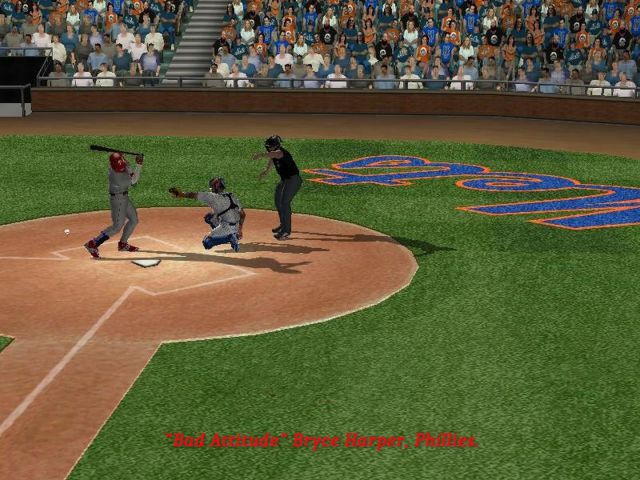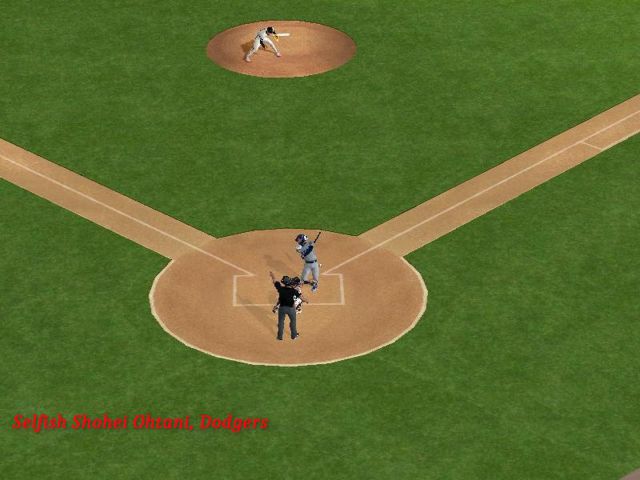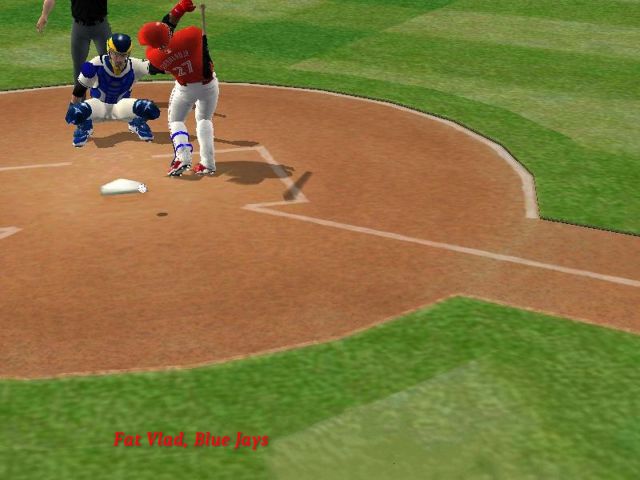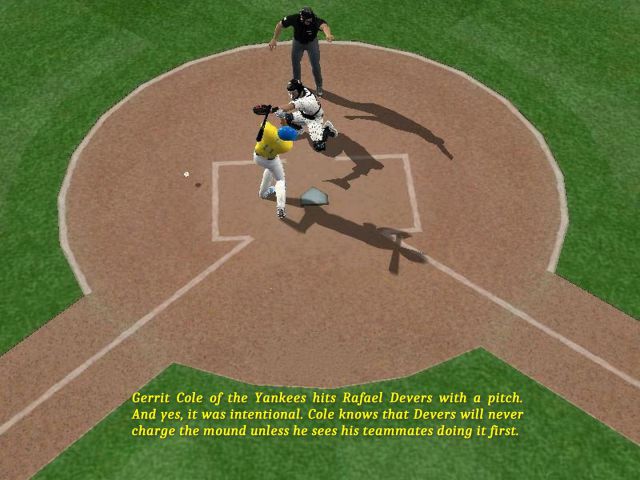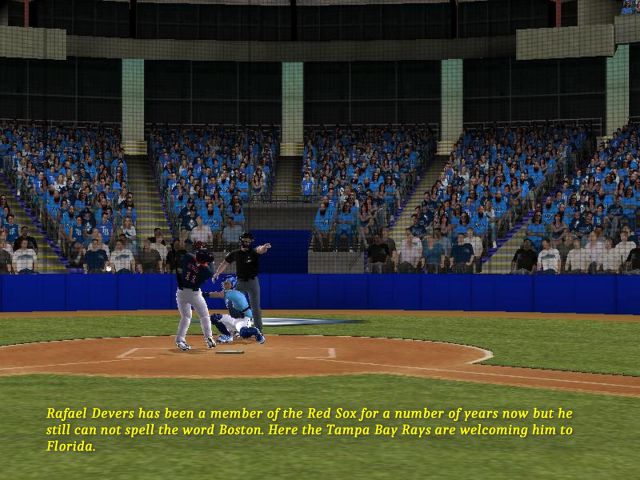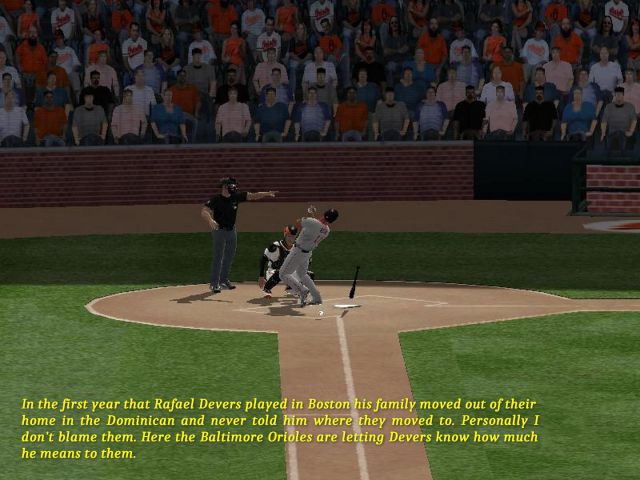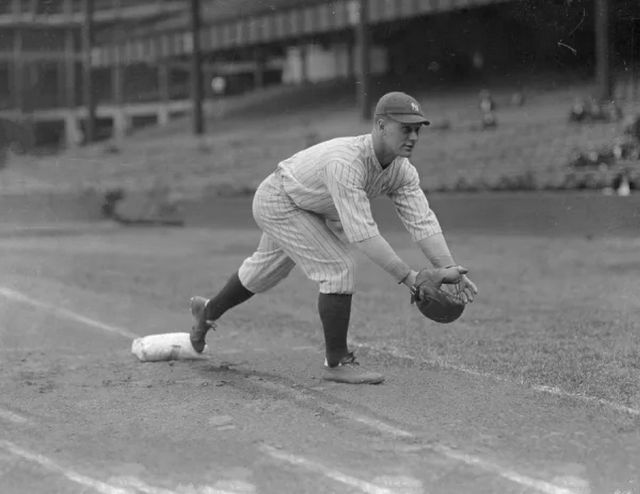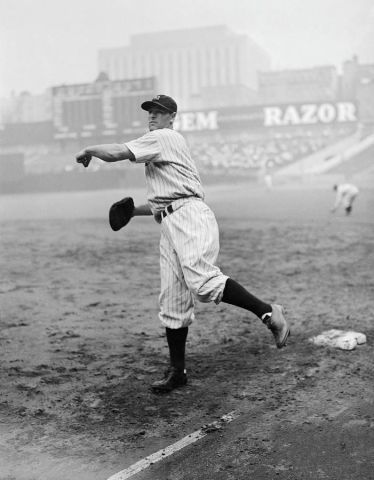-
Posts
21463 -
Joined
-
Days Won
82
Content Type
Profiles
Forums
Downloads
Everything posted by Yankee4Life
-
5 out of 10, 79 seconds. I was doing really well and then I got the last four in a row wrong. Hahahahahhaa Where did you get that, from Amazon? 😃
-
I found one! Right here!
-
Don't give up. I always spot them on eBay. They may not be there for a few days and then one will pop up.
-
I have no idea and I am so sorry this happened to you. Do you think that your best bet is to get a new copy from eBay? Sure you'll pay more than you did twenty years ago but you are a long time member here and you know very well what is offered here with having a good copy of the game. Best of luck.
-
-
6 out of 10, 69 seconds. Tuesdays are always a tough day for me. Ok, here are the results for March. Jim won it by seven points over Sabugo who had a very impressive month too.
-
With another baseball season beginning we are getting quite a few new people here and the first thing they will probably be doing is head straight to the download area and getting mods for their game. It got me to thinking why not recommend some of or favorite mods so they can check them out? I’ll start with two for Mvp baseball 2005. The Negro League Baseball mod Dennisjames71 has made many mods that newcomers will find all over the download area in mvp 2005 and for 2k’s games but this mod has to be hands down his best work. Consider what he had to do here to make this. Player stats were not as available or accurate at that time as pulling up statistics for the 1929 St. Louis Browns for example. Negro League stats were harder to come by but Dennis did it. Another unique thing about this mod is the stadiums that are included here. There are over a dozen stadiums in this mod that are not and will not be included in any other mod because these are Negro League stadiums. Hincliffe Field, Mack Park, Memphis Red Sox Park and Ruppert Stadium are four examples of what is included in this mod. I am willing to bet that even some veteran Mvp users are not aware of these stadiums. Total Classics 1951 I have been playing this wonderful mod for seventeen years and I was even fortunate enough to pitch a perfect game in it. This mod is a little older than the 1941 and 1939 mod that I play a lot too but with this mod I have never played a bad game in it. Something always seems to happen either in my favor or against me. Using the original sixteen teams in major league baseball was a thrill in itself. Give this mod a shot.
-
7 out of 10, 74 seconds. Four questions about the 2003 season and I only got one right.
-
10 out of 10, 34 seconds. Sundays and Fridays. You got to love them!
-
5 out of 10, 69 seconds. I started out well and then I fizzled at the end as I got the last four wrong.
-
You are getting better and better on the easy baseball questions. Fridays and Sundays are gifts.
-
10 out of 10, 30 seconds. Too much, too little, too late. If you would have not had that hesitation you would have been under thirty seconds.
-
Schoolboy Rowe Right-hander Schoolboy Rowe endured chronic, career-threatening shoulder pain to win 158 games in his big-league career from 1933 to 1949. In his second season, he won 24 games, including an AL-record-tying 16 consecutive victories to help lead the Detroit Tigers to their first pennant since 1909. The next season, 1935, he won 19 games as the Tigers captured their elusive world championship, while Rowe further cemented his reputation as one of the most popular players of his era. A 19-game winner again in 1936, Rowe won only one game over the next two seasons, his career derailed by shoulder miseries. The three-time All-Star made an unexpected comeback to help lead the Tigers to a surprising pennant in 1940. He was sold to the Brooklyn Dodgers in 1942 and optioned to the minors later that season, but the Lazarus of baseball returned from the dead again, in 1943, as a member of the lowly Philadelphia Phillies for whom he won 52 games in his last five seasons. Lynwood Thomas Rowe was born on January 11, 1910, in Waco, Texas, the second of three children born to Thomas Moss and Ruby Ann (Hardin) Rowe. By the early 1920s the family had settled in El Dorado, Arkansas, close to the border of Louisiana in the southern part of the state, where his father found a job in the booming oil industry. Tall, strong, and agile, Lynwood was a natural athlete whose accomplishments as a teenager had a Paul Bunyanesque ring when, after his meteoric rise to the big leagues, they were reported to fans looking for good news during the harsh times of the Great Depression. Syndicated sportswriter Charles P. Ward once wrote that “Schoolboy’s life [has been] written and rewritten” so many times that it was difficult to sort out the fact from fiction. Described by sportswriter Frank Reil as a “one man All-American athletic team” at El Dorado High School, Rowe was a track and field champion who excelled in distance running and throwing the javelin, shot put, and discus. He played on the golf and tennis teams, and starred in basketball and football. He was also an accomplished amateur boxer, and an avid hunter and fisherman. Upon graduation as a 21-year-old in 1931, he was a highly recruited football player. Lynwood’s passion, however, was baseball, and his childhood accomplishments on the diamond seemed larger than life. By the time the towering right-hander finished Hugh Goodwin Grammar School, he was a slugging and pitching legend on the sandlots of El Dorado. According to one report, he acquired the sobriquet Schoolboy from local sportswriter John Erp when he was a 14-year-old pitching in an adult church league. According to other reports, the name originated from opponents and fans who yelled, “Don’t let that schoolboy beat you.” Yet another account claimed that the moniker derived from the youngster’s job hawking newspapers on street corners. No story about Rowe during his big-league career was complete without a reference to his unusual signing in 1926 by the Detroit Tigers’ prolific scout Eddie Goosetree in an El Dorado firehouse for a $250 bonus, and the lanky hurler’s ensuing insouciance. The teenage Rowe refused to report to the Fort Smith (Arkansas) Twins in the Class C Western Association in 1927 and was ultimately suspended by Organized Baseball. Hiding his professional status, Rowe remained in high school and played baseball in local leagues in 1927 and 1928 (his high school did not field a team). While Rowe pitched in semipro leagues in Louisville (1929), Wichita (1930), and Bastrop, Louisiana (1931), he refused the Tigers’ assignments to the minor leagues (Little Rock in 1929 and Evansville in 1931), and thus remained suspended. Rowe began his professional baseball career in 1932 when his contract was sold to the Class A Beaumont (Texas) Exporters. Described as “one of the sensations of the Texas League,” Rowe won 19 games and led the circuit with a 2.30 ERA, helping the Exporters win the league championship. As successful as he was on the mound, he was just as dangerous at the plate, clouting ten home runs in 112 at-bats and slugging .625. According to The Sporting News, Exporters manager Del Baker “persuaded him to stick with pitching” instead of moving to the outfield. In his much-anticipated major-league debut on April 15, 1933, at Navin Field, Rowe tossed a six-hit shutout to defeat the Chicago White Sox, and the legend of the “Schoolboy” was born. After just his fourth start, he suffered a “sore arm” that sidelined him for two weeks and foretold a career plagued by chronic elbow and shoulder pain. In his first start in four weeks, he hurled the first of five consecutive complete-game victories, defeating the Philadelphia Athletics, 10-1, on May 26 at Shibe Park. “[Rowe] throws the ball past the batter,” said the A’s Mickey Cochrane. “[H]e has a loose motion and hides the ball from the sight of the batter with his delivery. The ball sneaks up on the batter.” In a pitchers’ duel with Lefty Grove on July 15, Rowe fielded a bunted ball by Cochrane and twisted his shoulder viciously on the throw to first base. The injury, diagnosed in the offseason as a “torn muscle,” was exacerbated when the right-hander took the mound twice more before he was shut down for the season on July 23. Rowe’s career year in 1934 began with uncertainty stemming from persistent pain in his shoulder. Despite wearing a shoulder brace for six weeks in the offseason, Rowe had difficulty extending his right arm; consequently, he pitched sparingly in spring training. New Tigers skipper Mickey Cochrane did not take kindly to Rowe’s complaining. He suggested that the pitcher needed a change in his “mental attitude” and threatened to send him back to Beaumont. Papers insinuated that Rowe’s injury was imaginary, describing it as a “sore arm complex.” In poor pitching condition, Rowe was shelled during the first month of the season. Rowe began one of the most unlikely and memorable stretches in Tigers history when he defeated the Boston Red Sox on May 27 to earn his first victory of the season as a starter. Starting and occasionally relieving, Rowe won 21 of his next 23 decisions, including the record-tying 16 consecutive victories. “Rowe’s brilliant performances,” wrote Tigers beat reporter Sam Greene, “have had the effect of inspiring the other pitchers.” Some of Rowe’s most compelling accomplishments were against the New York Yankees, whom the Tigers fiercely battled for the pennant. On two separate occasions, Rowe defeated the Bronx Bombers twice in a series while starting on short rest. In front of 79,000 fans at Yankee Stadium on August 14, he tossed a four-hitter to subdue the Yankees 7-3. Three days later he shut out New York on three hits while striking out 11 Yankees for the second time that season (Rowe notched ten or more strikeouts in a game six times in his career). Named to The Sporting News All-Star team, Rowe finished with 24 victories (trailing only Lefty Gomez’s 26) and just eight losses, completed 20 of 30 starts among his 45 appearances, and carved out a 3.45 earned-run average in 266 innings. More importantly, the Tigers captured their first pennant since 1909. Rowe’s folksy personality and his success appealed to baseball fans’ imagination during the hardships of the Great Depression. One of the tallest pitchers in baseball, the 6-foot-4, 210-pound Rowe possessed glamorous good looks, with dark hair and eyes and a square jaw. He was a colorful and superstitious player, carried talismans, amulets, and tokens for good luck while pitching, and always picked up his glove with his left hand. Long before another Tigers pitcher — Mark “The Bird” Fidrych” — captured the attention of fans for his animated antics on the mound, Rowe was known for talking to the baseball, which he often called Edna in honor of Edna Mary Skinner, whom he married after the 1934 World Series. He once described his preparation for pitching: “Just eat a lot of vittles, climb the mound, wrap my fingers around the ball and say to it, ‘Edna, honey, let’s go.’” During a nationally broadcast interview, Rowe famously asked his bride-to-be, “How am I doin’, Edna?” The question, which captured both Rowe’s charm and eccentricity, was as recognizable at the time as his nickname. Sportswriter James Isaminger of the Philadelphia Inquirer noted that Rowe momentarily “replaced Babe Ruth as baseball’s biggest drawing card.” Comparisons to Ruth were de rigueur because of their shared pitching background, and especially their hitting prowess. Rowe batted .303 (33-for-109) in 1934 with 22 runs batted in and two home runs (both game winners, in the ninth and 11th innings, respectively). Rumors swirled that he would eventually be moved to the field like Ruth. Praise for Rowe was effusive. Detroit News sportswriter H.G. Salsinger described him as “phlegmatic and totally composed,” adding, “[Rowe] has the finest pitching temperament the major leagues have known for some time. He has a sizzling fast ball, and explosive curve and a remarkable change of pace [and] he is never flustered.” Syndicated writer Charles P. Ward praised Rowe’s character: “[He] never scolds teammates for making mistakes [and] never boasts.” In Detroit’s much anticipated World Series against the St. Louis Cardinals in 1934, Rowe fashioned a 12-inning complete-game, 3-2 victory in Game Two. After a shaky start (six hits and two runs in the first three innings), Rowe tied a then-World Series record by retiring 22 consecutive batters and yielded just one hit in the last nine frames. Not as sharp in Game Six, Rowe tossed a complete game but surrendered ten hits and three earned runs in a 4-3 loss. He pitched with a noticeably swollen right hand, which he claimed happened when he shook hands too hard with comedian Joe E. Brown, but the injury was actually the result of a physical altercation with a photographer. The Redbirds’ colorful Dizzy Dean, with whom Rowe was often compared because of their down-home disposition, hurled an overpowering 11-0 shutout in Game Seven, during which Rowe was scorched for two runs in a one-third-inning relief outing. After an offseason filled with contract squabbles, Rowe arrived at spring training in 1935 predicting another pennant for the Tigers. The tall right-hander was hailed as a savior of sorts and the team’s hopes were pinned on his success; however, both Rowe and the Tigers got off to horrible starts. “[Rowe is] having his ears pinned back with astounding regularity,” reported Salsinger. With his heater lacking the speed from the previous season, Rowe slumped to a 3-5 record with an ERA well north of 5.00 on June 1. He won five of his next six decisions to improve his record to 8-6, and was named to the All-Star team for the first of three times. (He did not see action in the game.) Led by the “Big Four” (Tommy Bridges, General Crowder, Elden Auker, and Rowe), who combined for 74 victories, the Tigers went 20-8 in July to take over first place and held off the Yankees for the second consecutive year. Rowe was at his best in August, winning seven times, including three of his league-high six shutouts. He finished with 19 wins (13 losses), set career highs in innings (275⅔) and complete games (21), and posted a 3.69 ERA. In a rematch of the 1907 and 1908 World Series, the Tigers faced the Chicago Cubs searching for the club’s first world championship. Rowe hurled a complete-game seven-hitter in Game One, but the North Siders silenced the AL’s best hitting team on four hits. With the Tigers leading 5-3 in Game Three, Rowe took over in relief to begin the eighth inning, but surrendered two runs in the bottom of the ninth. After the Tigers scored a run in the 11th inning, Rowe pitched his fourth inning of relief to pick up the victory. Dueling Lon Warneke again, Rowe tossed a complete-game eight-hitter, but was a tough-luck loser, 3-1, in Game Five. The Tigers finally captured their elusive title in Game Six, when Goose Goslin drove in Cochrane on a walk-off single in the ninth inning. After posting a 62-31 record from 1934 to 1936, Rowe won only one big-league game in the next two seasons, his career seemingly cut short by mysterious shoulder pain. His demise was not necessarily unexpected, as H.G. Salsinger reported prior to the 1935 season: “We’ve talked to several trainers who believe that Rowe will not have an extended pitching career. There is a hard lump on his shoulder. His muscles are not loose and pliable.” Compounding the matter was the increasingly antagonistic relationship between Cochrane and Rowe. In May 1937 Cochrane surprisingly suspended Rowe for ostensibly being in poor shape, and rumors swirled that the Tigers had hired investigators to pry into Rowe’s private life. “Rowe’s humiliation was undeserved,” opined Tigers beat reporter, Sam Greene. Ironically, in Rowe’s first start of the season, on May 25 (a loss to the New York Yankees), Cochrane’s skull was cracked on a pitch from Bump Hadley, thus ending his playing career. Rowe made only four appearances for the Tigers in 1938 before he was assigned to the Beaumont Exporters. Lacking his typical speed and easy, loose delivery, Rowe had a hitch in his motion. Washington Senators skipper Bucky Harris felt that Rowe seemed to be “pushing rather than pitching the ball” because of chronic pain. While pitching in the Texas League, Rowe made a remarkable and unexpected recovery, which he explained to Salsinger: “I decided I’d get my right arm around and touch my left shoulder. I took a deep breath, filled my lungs, closed my eyes, gripped the bedside with my left hand and threw my right arm as hard as I could. There was a crack like a pistol shot as the hand touched the left shoulder blade. The pain disappeared that instant.” Schoolboy went 12-2 for Beaumont with a 2.27 ERA. Rowe was sidelined for four weeks after just his second start of the 1940 season. But Rowe made a “courageous comeback” and posted a remarkable 16-3 record (and league-best .842 winning percentage) for a team few expected to contend for the pennant. Rowe won eight of nine decisions in the last two months of the season when the team needed him most, as the Tigers overcame a four-game deficit on September 3 to win take the pennant by one game over the Cleveland Indians. “Six months ago,” wrote H.G. Salsinger, “there were probably only two men in baseball who believed Lynwood Thomas Rowe would stage a thorough comeback. One was Rowe; the other was [manager] Baker.” Rowe’s success in the regular season did not carry over to the World Series against the Cincinnati Reds. He was shelled in both of his starts. He yielded five runs and eight hits in 3⅓ innings in Game Two and was tagged for two runs and four hits in just a third of an inning in Game Six. The overwhelmingly underdog Tigers lost a heartbreaking Game Seven, 2-1. Rowe struggled for most of the 1941 season, winning just eight of 14 decisions and making only 14 starts. He was relegated to the bullpen for a two-month stretch, giving rise to the sentiment that he was washed up (again) as a starter. Rowe began his tenth big-league season, in 1942, after a stressful offseason dominated by rumors of his imminent trade. After just two appearances, his career with the Tigers came to an ignominious close as the club sold him for an estimated $20,000 to the Brooklyn Dodgers on April 30. The Dodgers were loaded with six bona-fide starters; consequently, Rowe found little opportunity to pitch. After just nine appearances (including two starts), he was unceremoniously optioned to the Montreal Royals in the International League in mid-August. Initially Rowe refused to report to Montreal, claiming that he was through with baseball and insinuating that he would retire. “The Schoolboy’s case is truly a sad one,” eulogized sportswriter Charles P. Ward, “and it is made sadder when one realizes that he is one of the nicest players in baseball.” With just ten victories in two years, Rowe’s career seemed to be over — for the second time. On March 24, 1943, Rowe was traded to the lowly Philadelphia Phillies, who were coming off five consecutive 100-loss seasons. Rowe was reunited with new manager Bucky Harris, who had skippered him during his rookie season in 1932. The tall Arkansan miraculously rejuvenated his career with a knuckleball, an impressive slider, and an assortment of off-speed pitches. Rowe had thrown the knuckler occasionally as a rookie, but he learned to master the dastardly pitch during his short stint in Brooklyn, under the tutelage of knuckleball wizard Freddie Fitzsimmons. Rowe won seven of his first ten decisions, including two shutouts (a four-hitter against the Pittsburgh Pirates and a three-hitter versus the Boston Braves), and sported a sparkling 2.03 ERA on July 1. Phillies beat reporter Stan Baumgartner called Schoolboy the “most popular player” on the team. Rowe finished the season with a team-high 14 victories (eight losses), a stellar 2.94 ERA in 199 innings, and the best control in the NL (he walked a league-low 1.3 batters per nine innings). Schoolboy was arguably the Phillies’ best hitter, too, and led the league in pinch hits (15) and pinch-hit at-bats with (51). He finished with a team-high .300 average (36-for-120), four home runs and 18 runs batted in. The 36-year-old Rowe made yet another “magnificent” comeback with the Phillies in 1946 after his return from World War II. In his first big-league appearance in more than 2½ years, he tossed an 11-inning complete game to lose in heartbreaking fashion, 3-2, to the Boston Braves. Rowe (periodically referred to as “Schoolmaster” because of his age) won 11 of 15 decisions and posted an impressive 2.12 ERA in 136 innings before a strained groin ended his season in August. Rowe went 10-10 and 3-7 in his last two seasons with the Phillies (1948-49). He was recognized as a valuable mentor and taught young pitchers to inspect mounds, dirt, foul lines, and wind current in order to take every advantage possible. “Ballparks,” Rowe once said, “are individuals to me, not just so much stone, concrete, and steel. They are like a lot of old ladies with varying temperaments. You have to study them, humor them, go along with their whims on certain days. They are all built differently, dressed differently, react differently to rain, sunshine, fog, wind.” His release at the conclusion of the 1949 season closed the book on a storied career that left fans wondering how good he might have been had he not been plagued by injuries. He won 158 games and lost 101 (.610 winning percentage) and posted a 3.87 ERA. One of the best hitting pitchers in big-league history, he possessed a .263 average with 18 home runs and 153 RBI’s.
-
It is always nice to see people that were here years ago. 🙂
-
7 out of 10, 32 seconds. Well how do you like that? I'm shocked.
-
9 out of 10, 69 seconds. Some of these questions were not in the "difficult" category. I was asked what was the team did Joe Dimaggio retire with? Come on now. I have to join laroquece in the Lucky Guy category today!
-
7 out of 10, 47 seconds. Don't think for a second I knew the answers today. I just clicked on the right ones. For example... Which one of the following tracks is the racing affected by the 'draft' the most? (Talladega) Who knew? Who scored the most goals at the 2002 World Cup Finals? (Rolando) Who's he? How many points is a goal worth in netball? (One) Who won the Clive Churchill medal? (Craig Fitzgibbon) Who is Clive Churchill and also who is Craig Fitzgibbon?
-
Yes. There are two older ones made during the XP days and I used them both on that Windows version but just to let you know I have not used them in many years and that is due to Windows itself. First, Boricuapapi1885's Hi Res Grass And Dirt Mod. And secondly Field Changer v.1.2 by Trues. Read the file descriptions on both of these mods and see if they will help.
-
I remember this mod very well and I used it when it first came out. This is one of the first utilities made for Mvp ‘05. It was uploaded in May of that year. What I think is the problem is that you are trying to get this to work on a Windows version that is not Windows XP.
-
6 out of 10, 70 seconds. Wow, these were tough today.
-
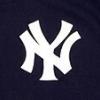
Great and Historical Games of the Past
Yankee4Life replied to Yankee4Life's topic in Baseball History
June 3, 1932: Lou Gehrig hits four home runs, Tony Lazzeri hits for cycle in Yankees romp It was a game of excess, played on a Friday afternoon in Philadelphia’s Shibe Park. Two teams combined for 104 plate appearances, 77 total bases, and 17 runners left on base. The first-place Yankees were playing the fourth game of a six-game series against the Athletics, who occupied fourth place in the American League, 5 games behind New York. The 5,000 fans at the game saw 33 runs, 36 hits, 9 home runs, 5 triples, 14 walks, 12 strike-outs, and 5 errors. On any other day, Yankees third baseman Tony Lazzeri would have owned the newspaper sports-page headlines. But on this day he was overshadowed by four different baseball events. On a day when Lazzeri hit for a natural cycle (single, double, triple, and home run in that order, the homer being a grand slam), Lou Gehrig amazingly hit four home runs and narrowly missed a fifth. On top of that, Babe Ruth launched his 15th home run of the season, second-best in the major leagues. Jimmie Foxx hit his ML-best 19th homer for Philadelphia. Still more headline-worthy, John McGraw announced that he was retiring from baseball after 29 years as manager of the New York Giants because of a two-year battle with a serious sinus condition. According to the New York Times, “Largely because of Gehrig’s quartet of tremendous smashes the Yankees outstripped the Athletics in a run-making marathon, winning 20 to 13, after twice losing the lead because of determined rallies by the American League champions.” Gehrig joined the Boston Beaneaters’ Bobby Lowe (May 30, 1894) and the Philadelphia Phillies’ Ed Delahanty (July 13, 1896) as the only players to collect four home runs in a game. In the first and fifth innings, Gehrig hit his bombs beyond the fence in left-center field, and in the fourth and seventh, he cleared the wall in right field. With the home run in the fifth inning, Gehrig became “the first man in baseball history to ever hit three home runs in one game for the fourth time.” On top of that, that third home run was a back-to-back-to-back shot, as Earle Combs and Ruth had homered ahead of him. In the top of the ninth inning, Gehrig “pointed a terrific drive which Al Simmons captured only a few steps from the furthest corner of the park.” Estimates put the drive at 460 feet from home plate. (It was 468 feet from home to the deepest part of the ballpark in center field, near the flagpole.) George Earnshaw started for the Athletics and pitched five innings, allowing seven runs (six earned). His counterpart for the Yankees, Johnny Allen, gave up eight runs (four earned) in 3 2/3 innings. Allen was ejected by home-plate umpire Harry Geisel in the fourth inning for “bench jockeying,” the usual phrase used when a player argues balls and strikes from the dugout. The Yankees committed five errors in the contest (Ruth, Gehrig, Frank Crosetti with 2, and Allen). The Yankees used five hurlers and Athletics four, and all nine pitchers in the game allowed at least one run. Jumbo Brown picked up his first win of the season in relief, and Lefty Gomez earned his first save. Reliever Roy Mahaffey took the loss for Philadelphia. Lazzeri stroked five hits in six at-bats. In addition, he stole a base. As of 2015, he was one of only 14 major leaguers to have a natural cycle, and was the only one whose home run was a grand slam. With his five hits, Lazzeri’s average jumped to .357, third-best in the American League. Lazzeri and Gehrig each drove in six runs in the Yankees victory. Every starting position player for New York drove in at least one run. Doc Cramer and Ed Coleman led Philadelphia with three RBIs each. The New Yorkers tied the then-major league record by hitting seven home runs in the game. The Yankees’ 20 runs scored were their highest run total of the season. The 23 hits by New York set a modern record at the time. The game seesawed back and forth. The Yankees scored twice in the first, highlighted by Gehrig’s first home run of the game, a two-run shot. The Athletics responded with two runs in the bottom half of the first, with a Mickey Cochrane home run. Gehrig’s second blast, a solo homer, was part of a two-run fourth inning for New York, but then Allen allowed six Philadelphia tallies in the bottom of the fourth, before he was chased from the game. New York seemed to have batting practice, scoring in each of the final six frames, with two runs in the fourth inning, three in the fifth, two in the sixth, three in the seventh, two in the eighth, and six in the ninth inning, capped by Lazzeri’s grand slam home run to give him the cycle. Gehrig’s missed home run could have meant an even higher score. Philadelphia scored twice in the bottom of the sixth for a short-lived lead, and the A’s added two runs in the eighth and a Jimmie Foxx solo home run in the bottom of the ninth. The final score: New York 20, Philadelphia 13. The next day, the New York Times carried the headline, “Gehrig Ties All-Time Record With Four Straight Home Runs as Yankees Win,” across the top of its sports page on June 4, 1932. However, it then only gave the first column to describing the game, and only a small portion was for Gehrig’s record-tying feat. Five of the eight columns on the front page of the sports section in the New York Times were devoted to John McGraw, who was only 59 years old when he announced his retirement. Joe McCarthy, manager of the Yankees, told reporters, “McGraw must have been pretty sick, for he is not the kind to give up baseball without a reason.” One of Gehrig’s finest offensive performances was apparently minimized by the news of McGraw’s retirement. Incoming Giants skipper Bill Terry was given close to a full column on the sports pages, and even his wife was given a short article, which stated that “Mrs. Bill Terry was a very, very proud young woman today when she heard of her husband’s appointment as manager of the New York Giants.” -
Like I was saying....😄
-
10 out of 10, 38 seconds. Not bad, but someone is going to beat this today.
-
8 out of 10, 59 seconds. Looking at the final score today I can tell you all I got lucky on a few of them.



